Maria Tikhonova
Multimodal Evaluation of Russian-language Architectures
Nov 19, 2025Abstract:Multimodal large language models (MLLMs) are currently at the center of research attention, showing rapid progress in scale and capabilities, yet their intelligence, limitations, and risks remain insufficiently understood. To address these issues, particularly in the context of the Russian language, where no multimodal benchmarks currently exist, we introduce Mera Multi, an open multimodal evaluation framework for Russian-spoken architectures. The benchmark is instruction-based and encompasses default text, image, audio, and video modalities, comprising 18 newly constructed evaluation tasks for both general-purpose models and modality-specific architectures (image-to-text, video-to-text, and audio-to-text). Our contributions include: (i) a universal taxonomy of multimodal abilities; (ii) 18 datasets created entirely from scratch with attention to Russian cultural and linguistic specificity, unified prompts, and metrics; (iii) baseline results for both closed-source and open-source models; (iv) a methodology for preventing benchmark leakage, including watermarking and licenses for private sets. While our current focus is on Russian, the proposed benchmark provides a replicable methodology for constructing multimodal benchmarks in typologically diverse languages, particularly within the Slavic language family.
MMTEB: Massive Multilingual Text Embedding Benchmark
Feb 19, 2025Abstract:Text embeddings are typically evaluated on a limited set of tasks, which are constrained by language, domain, and task diversity. To address these limitations and provide a more comprehensive evaluation, we introduce the Massive Multilingual Text Embedding Benchmark (MMTEB) - a large-scale, community-driven expansion of MTEB, covering over 500 quality-controlled evaluation tasks across 250+ languages. MMTEB includes a diverse set of challenging, novel tasks such as instruction following, long-document retrieval, and code retrieval, representing the largest multilingual collection of evaluation tasks for embedding models to date. Using this collection, we develop several highly multilingual benchmarks, which we use to evaluate a representative set of models. We find that while large language models (LLMs) with billions of parameters can achieve state-of-the-art performance on certain language subsets and task categories, the best-performing publicly available model is multilingual-e5-large-instruct with only 560 million parameters. To facilitate accessibility and reduce computational cost, we introduce a novel downsampling method based on inter-task correlation, ensuring a diverse selection while preserving relative model rankings. Furthermore, we optimize tasks such as retrieval by sampling hard negatives, creating smaller but effective splits. These optimizations allow us to introduce benchmarks that drastically reduce computational demands. For instance, our newly introduced zero-shot English benchmark maintains a ranking order similar to the full-scale version but at a fraction of the computational cost.
The Russian-focused embedders' exploration: ruMTEB benchmark and Russian embedding model design
Aug 22, 2024Abstract:Embedding models play a crucial role in Natural Language Processing (NLP) by creating text embeddings used in various tasks such as information retrieval and assessing semantic text similarity. This paper focuses on research related to embedding models in the Russian language. It introduces a new Russian-focused embedding model called ru-en-RoSBERTa and the ruMTEB benchmark, the Russian version extending the Massive Text Embedding Benchmark (MTEB). Our benchmark includes seven categories of tasks, such as semantic textual similarity, text classification, reranking, and retrieval. The research also assesses a representative set of Russian and multilingual models on the proposed benchmark. The findings indicate that the new model achieves results that are on par with state-of-the-art models in Russian. We release the model ru-en-RoSBERTa, and the ruMTEB framework comes with open-source code, integration into the original framework and a public leaderboard.
Long Input Benchmark for Russian Analysis
Aug 05, 2024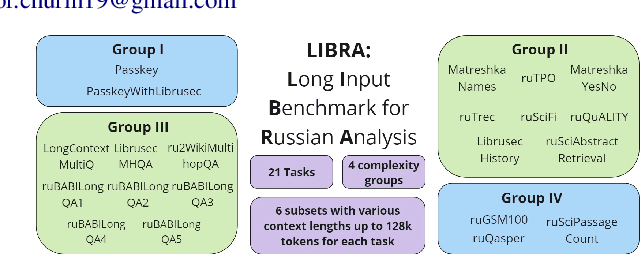
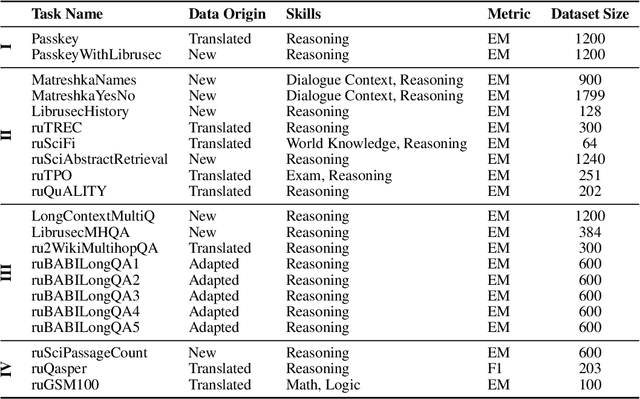
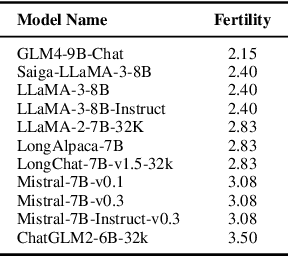
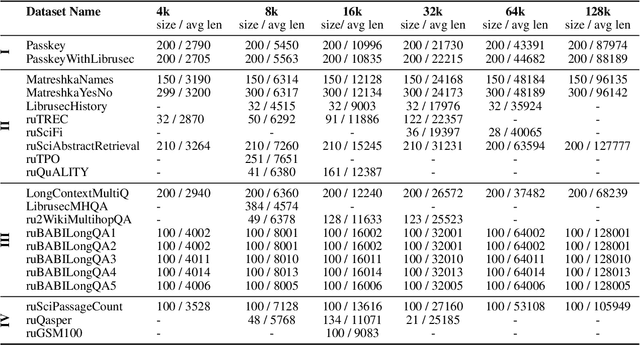
Abstract:Recent advancements in Natural Language Processing (NLP) have fostered the development of Large Language Models (LLMs) that can solve an immense variety of tasks. One of the key aspects of their application is their ability to work with long text documents and to process long sequences of tokens. This has created a demand for proper evaluation of long-context understanding. To address this need for the Russian language, we propose LIBRA (Long Input Benchmark for Russian Analysis), which comprises 21 adapted datasets to study the LLM's abilities to understand long texts thoroughly. The tests are divided into four complexity groups and allow the evaluation of models across various context lengths ranging from 4k up to 128k tokens. We provide the open-source datasets, codebase, and public leaderboard for LIBRA to guide forthcoming research.
MERA: A Comprehensive LLM Evaluation in Russian
Jan 12, 2024
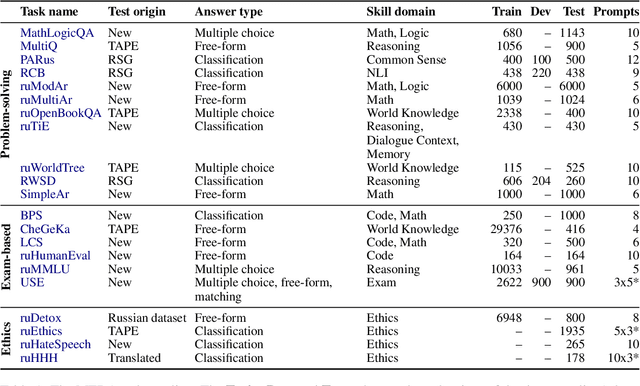
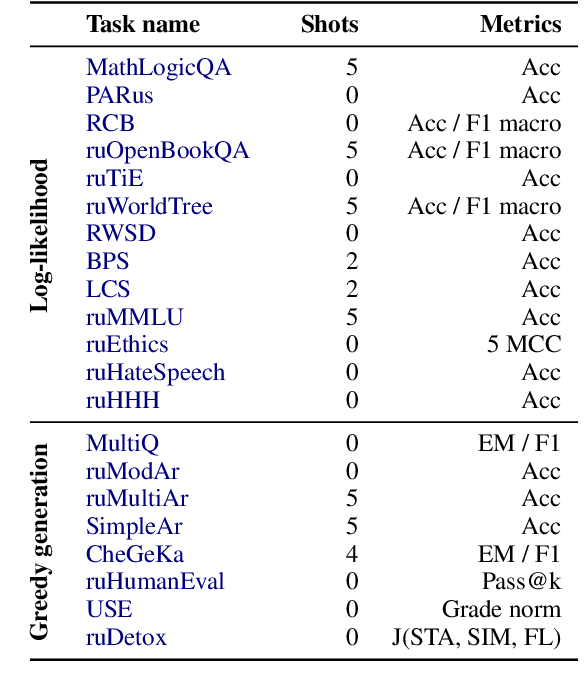
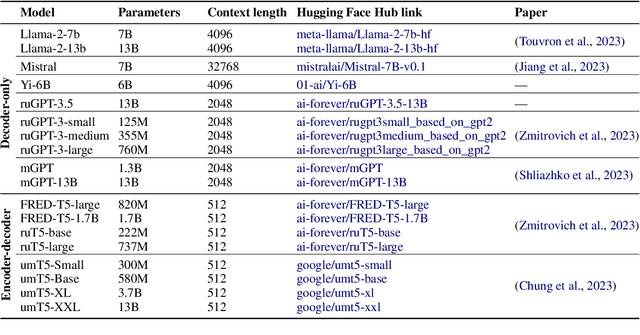
Abstract:Over the past few years, one of the most notable advancements in AI research has been in foundation models (FMs), headlined by the rise of language models (LMs). As the models' size increases, LMs demonstrate enhancements in measurable aspects and the development of new qualitative features. However, despite researchers' attention and the rapid growth in LM application, the capabilities, limitations, and associated risks still need to be better understood. To address these issues, we introduce an open Multimodal Evaluation of Russian-language Architectures (MERA), a new instruction benchmark for evaluating foundation models oriented towards the Russian language. The benchmark encompasses 21 evaluation tasks for generative models in 11 skill domains and is designed as a black-box test to ensure the exclusion of data leakage. The paper introduces a methodology to evaluate FMs and LMs in zero- and few-shot fixed instruction settings that can be extended to other modalities. We propose an evaluation methodology, an open-source code base for the MERA assessment, and a leaderboard with a submission system. We evaluate open LMs as baselines and find that they are still far behind the human level. We publicly release MERA to guide forthcoming research, anticipate groundbreaking model features, standardize the evaluation procedure, and address potential societal drawbacks.
A Family of Pretrained Transformer Language Models for Russian
Sep 19, 2023
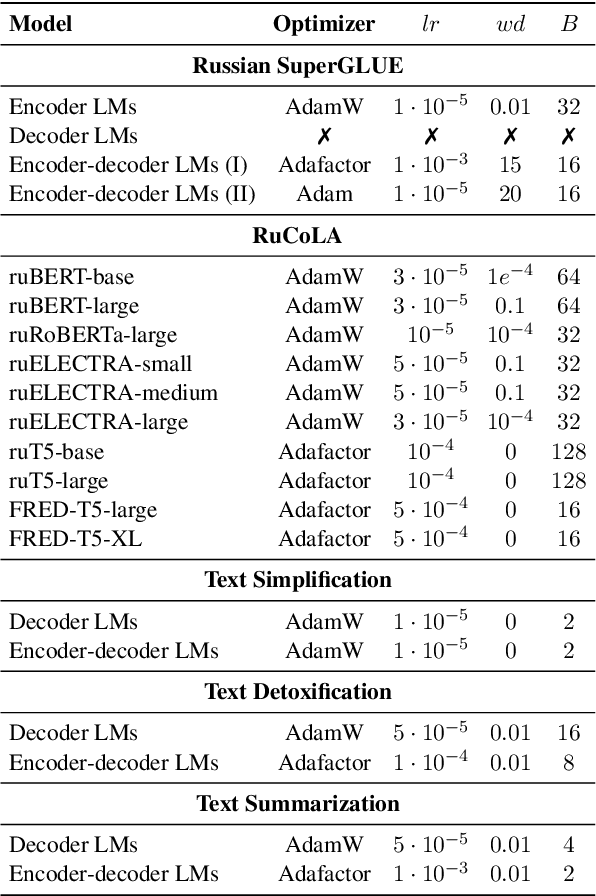
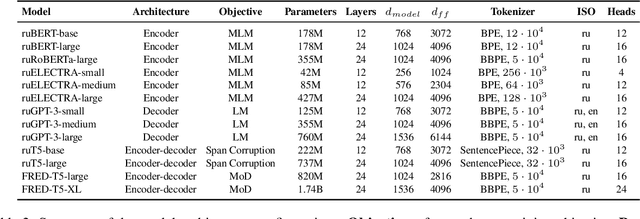
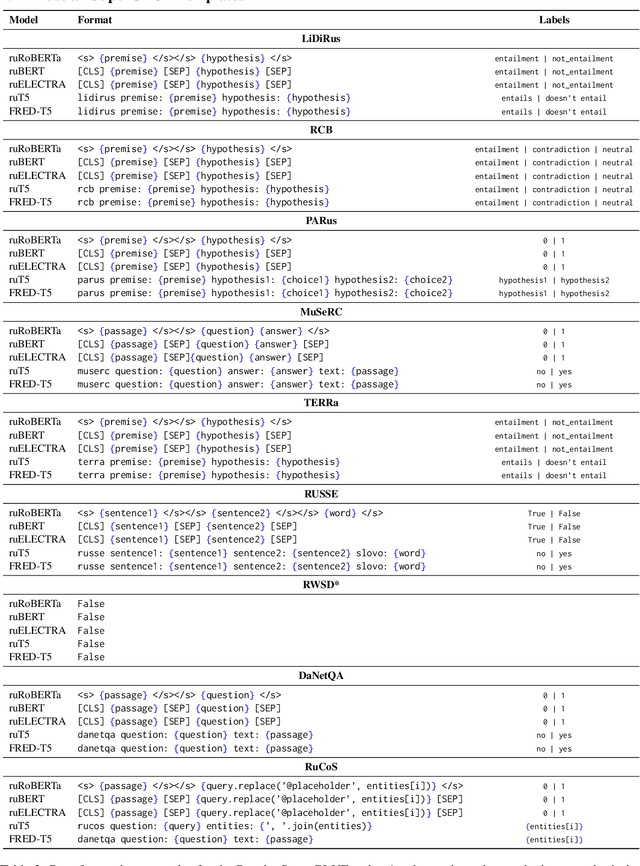
Abstract:Nowadays, Transformer language models (LMs) represent a fundamental component of the NLP research methodologies and applications. However, the development of such models specifically for the Russian language has received little attention. This paper presents a collection of 13 Russian Transformer LMs based on the encoder (ruBERT, ruRoBERTa, ruELECTRA), decoder (ruGPT-3), and encoder-decoder (ruT5, FRED-T5) models in multiple sizes. Access to these models is readily available via the HuggingFace platform. We provide a report of the model architecture design and pretraining, and the results of evaluating their generalization abilities on Russian natural language understanding and generation datasets and benchmarks. By pretraining and releasing these specialized Transformer LMs, we hope to broaden the scope of the NLP research directions and enable the development of industrial solutions for the Russian language.
TAPE: Assessing Few-shot Russian Language Understanding
Oct 23, 2022Abstract:Recent advances in zero-shot and few-shot learning have shown promise for a scope of research and practical purposes. However, this fast-growing area lacks standardized evaluation suites for non-English languages, hindering progress outside the Anglo-centric paradigm. To address this line of research, we propose TAPE (Text Attack and Perturbation Evaluation), a novel benchmark that includes six more complex NLU tasks for Russian, covering multi-hop reasoning, ethical concepts, logic and commonsense knowledge. The TAPE's design focuses on systematic zero-shot and few-shot NLU evaluation: (i) linguistic-oriented adversarial attacks and perturbations for analyzing robustness, and (ii) subpopulations for nuanced interpretation. The detailed analysis of testing the autoregressive baselines indicates that simple spelling-based perturbations affect the performance the most, while paraphrasing the input has a more negligible effect. At the same time, the results demonstrate a significant gap between the neural and human baselines for most tasks. We publicly release TAPE (tape-benchmark.com) to foster research on robust LMs that can generalize to new tasks when little to no supervision is available.
mGPT: Few-Shot Learners Go Multilingual
Apr 15, 2022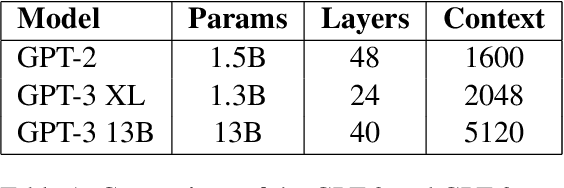
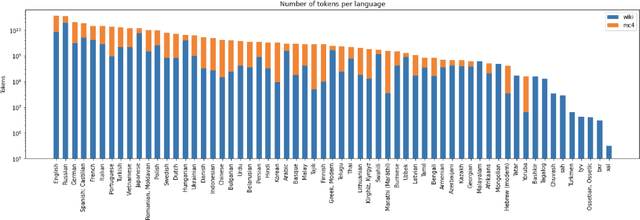
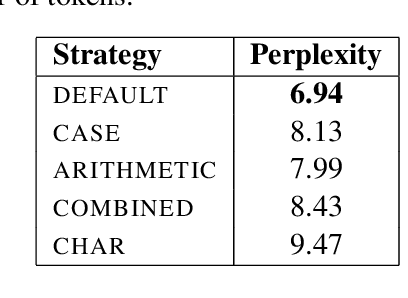
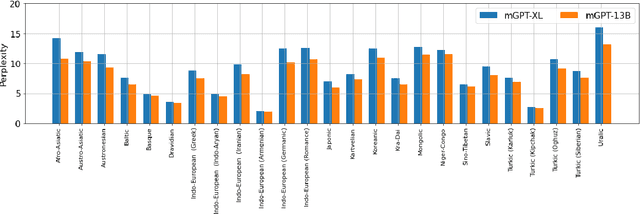
Abstract:Recent studies report that autoregressive language models can successfully solve many NLP tasks via zero- and few-shot learning paradigms, which opens up new possibilities for using the pre-trained language models. This paper introduces two autoregressive GPT-like models with 1.3 billion and 13 billion parameters trained on 60 languages from 25 language families using Wikipedia and Colossal Clean Crawled Corpus. We reproduce the GPT-3 architecture using GPT-2 sources and the sparse attention mechanism; Deepspeed and Megatron frameworks allow us to parallelize the training and inference steps effectively. The resulting models show performance on par with the recently released XGLM models by Facebook, covering more languages and enhancing NLP possibilities for low resource languages of CIS countries and Russian small nations. We detail the motivation for the choices of the architecture design, thoroughly describe the data preparation pipeline, and train five small versions of the model to choose the most optimal multilingual tokenization strategy. We measure the model perplexity in all covered languages and evaluate it on the wide spectre of multilingual tasks, including classification, generative, sequence labeling and knowledge probing. The models were evaluated with the zero-shot and few-shot methods. Furthermore, we compared the classification tasks with the state-of-the-art multilingual model XGLM. source code and the mGPT XL model are publicly released.
Russian SuperGLUE 1.1: Revising the Lessons not Learned by Russian NLP models
Feb 15, 2022



Abstract:In the last year, new neural architectures and multilingual pre-trained models have been released for Russian, which led to performance evaluation problems across a range of language understanding tasks. This paper presents Russian SuperGLUE 1.1, an updated benchmark styled after GLUE for Russian NLP models. The new version includes a number of technical, user experience and methodological improvements, including fixes of the benchmark vulnerabilities unresolved in the previous version: novel and improved tests for understanding the meaning of a word in context (RUSSE) along with reading comprehension and common sense reasoning (DaNetQA, RuCoS, MuSeRC). Together with the release of the updated datasets, we improve the benchmark toolkit based on \texttt{jiant} framework for consistent training and evaluation of NLP-models of various architectures which now supports the most recent models for Russian. Finally, we provide the integration of Russian SuperGLUE with a framework for industrial evaluation of the open-source models, MOROCCO (MOdel ResOurCe COmparison), in which the models are evaluated according to the weighted average metric over all tasks, the inference speed, and the occupied amount of RAM. Russian SuperGLUE is publicly available at https://russiansuperglue.com/.
MOROCCO: Model Resource Comparison Framework
Apr 29, 2021



Abstract:The new generation of pre-trained NLP models push the SOTA to the new limits, but at the cost of computational resources, to the point that their use in real production environments is often prohibitively expensive. We tackle this problem by evaluating not only the standard quality metrics on downstream tasks but also the memory footprint and inference time. We present MOROCCO, a framework to compare language models compatible with \texttt{jiant} environment which supports over 50 NLU tasks, including SuperGLUE benchmark and multiple probing suites. We demonstrate its applicability for two GLUE-like suites in different languages.
 Add to Chrome
Add to Chrome Add to Firefox
Add to Firefox Add to Edge
Add to Edge